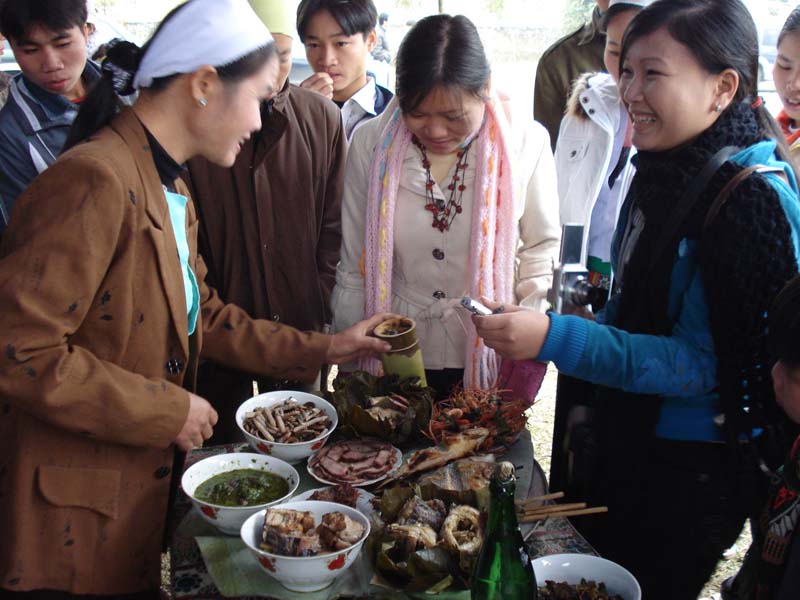



Tourists
explore local food during festive occasions
Muong Bi is an ancient land full of mystic features. Popular
destinations include the Muoi cave archaeological site, a series of caves,
namely Muong Chieng, But, Bung, Hoa Tien, and Nam Son, and Thac Bo, and the
Muong Bi flag pole, just to name a few.
Everywhere we go, either travelling to the longevity valley in
Lung Van or visiting Ai village (Phong Phu commune), and Ngoi village (Ngoi Hoa
commune), we always see the Muong ethnic culture and lifestyle in local
architect, costume, dance, and behaviour.
The Muong gong is a highlight of the land. It comes along with the
image of thousands of Muong Bi women in traditional costumes parading and
playing the musical instrument in different festivals.
Tan Lac district is endowed with advantages for many types of
tourism from cultural and spiritual to ecological tours. The land has
impressive forests and mountains, streams and waterfalls, and traditional
colourful ethnic festivals. In recent years, it has carried out more
professional tourism activities, with traditional events, such as the fishing
festival in Lo Son and Phu Vinh communes, and the summer festival, gradually
revived.
The Muong Bi summer festival marks the beginning of the season. It
is said to showcase most of Muong Bi’s special cultural features, including
food, lifestyle, and sports. The festival has attracted thousands of visitors
in recent years.
Tan Lac has put forth several measures to attract investment in
tourism. It has held various tourism promotion conferences and taken specific
steps to realise Resolution 03-NQ/HU of the district Party Committee issued on
June 21, 2016 on local tourism development for 2016 – 2020.
In 2017, Tan Lac welcomed many investors who came to study local
potentials. As a result, the district’s authorities are considering three
projects in Quyet Chien and Ngoi Hoa communes.
The number of visitors to Tan Lac amounted to 94,729 last year;
they spent over 10.9 trillion VND, up 946 million VND from the same period in
2016.